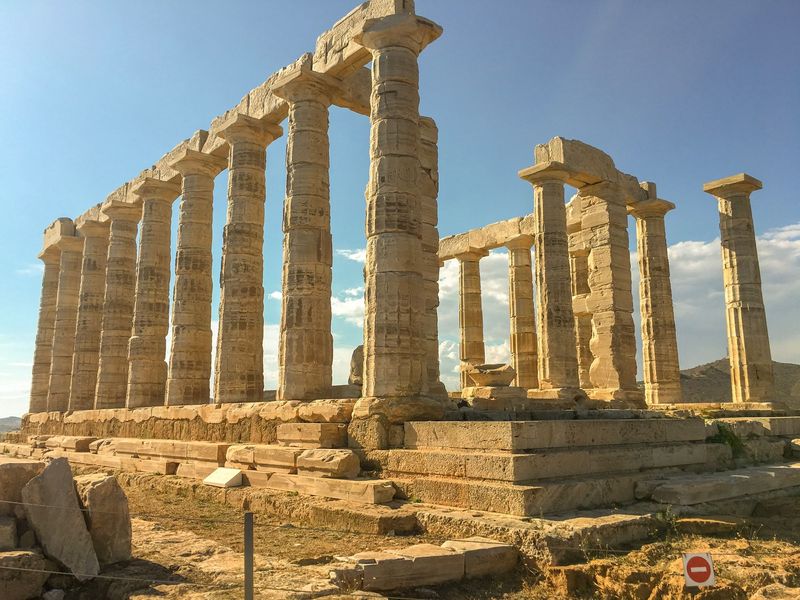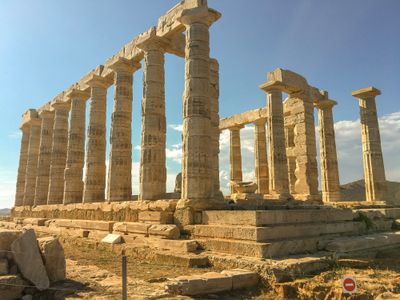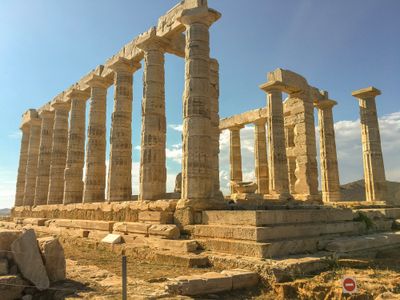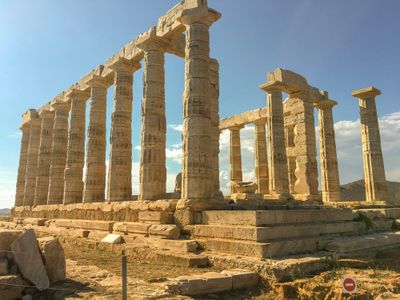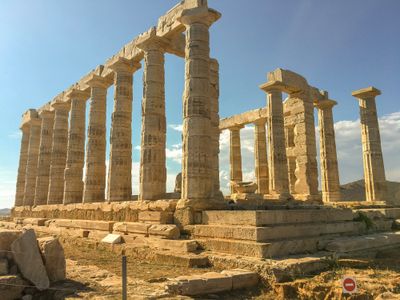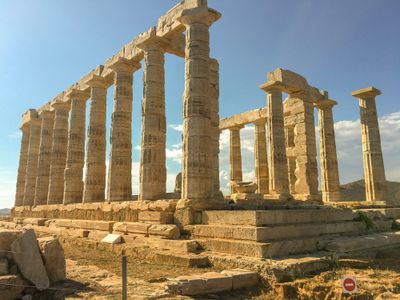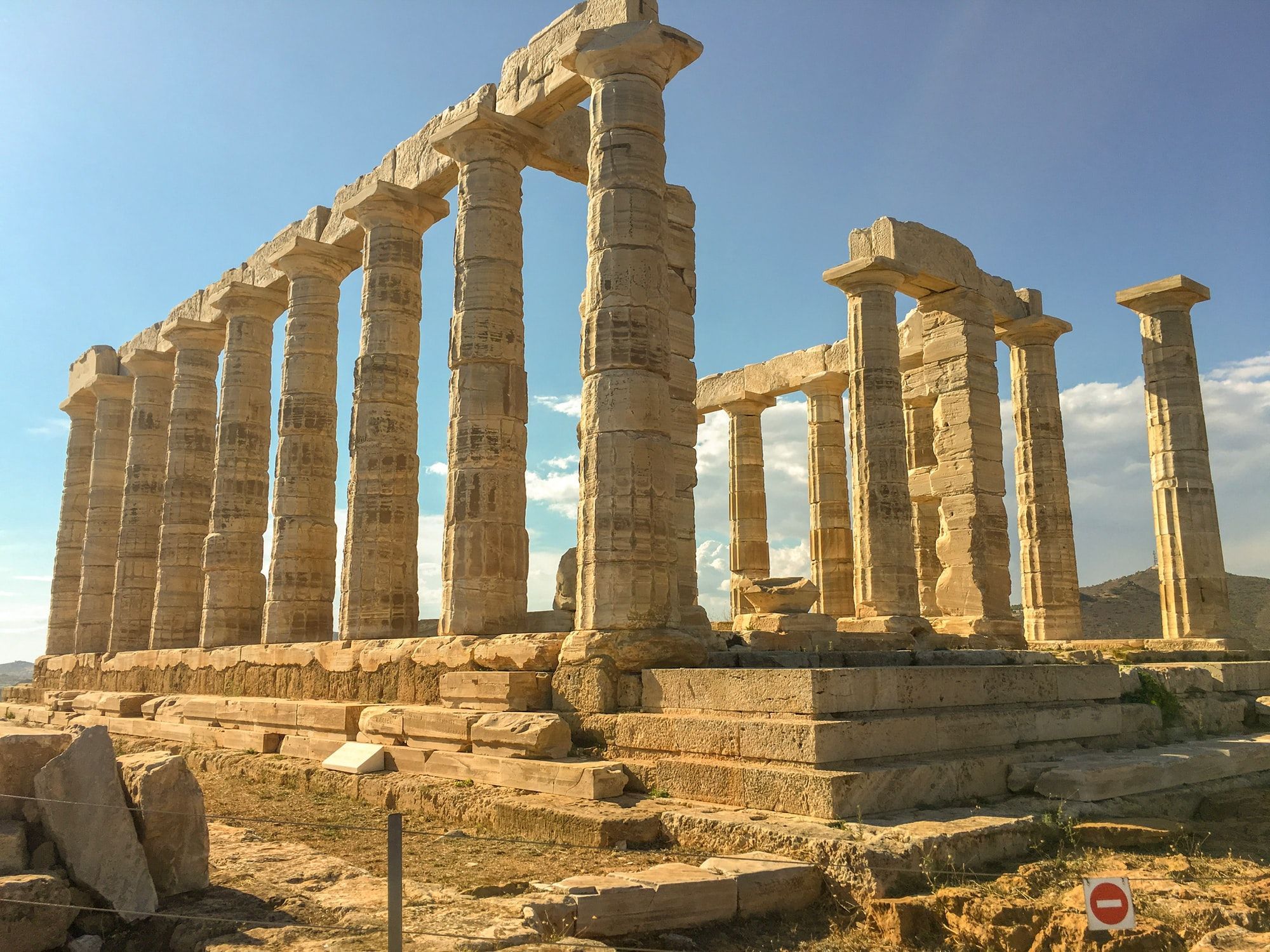
This article relates to episode 7 in the series ‘Cyber Security in the Ancient World’. Episode 6 and 7 discuss ancient fire signalling. In episode 6 we have discussed Greek fire signalling. In this episode (7) we will discuss Roman fire signalling.
From accounts of Near Eastern, Greek (and later Roman) history starting in the archaic period, for example, we know that both normal (that is, non-encrypted) and simple encoded or encrypted messages could be sent over long distances by means of fire signals as discussed in a wide range of classical sources.[1] Thus, to take just one salient example from this extensive list, Aeschylus in his Agamemnondescribes how Clytaemnestra received word from Agamemnon returning from Troy by means of beacons signals that were fast and efficiently sent from one station and one hilltop to the next (Aeschylus, Agamemnon, 281-283). As it was only possible to send one prearranged message using this archaic system of fire signalling, communicating parties needing to communicate on urgent matters faced significant limitations (Polybius, Histories, 10.43-5-6). Aeneas Tacticus and Polybius accordingly invented methods for fire signalling, whereby a series of messages could be sent back and forth between distant mountain tops.
Now we will move from Greek fire signalling to Roman fire signalling. Tactical signals have been employed by the Romans in battles since the time of the Republic (ca. 509 -27 BCE). In fact, fire signals in wartime can be found in Roman military records. All references to these signals are related to warfare. We cannot find any references to, for example, commercial, or diplomatic purposes.[2]
The Romans had access to earlier Greek and Carthaginian systems, known from Aeneas, Polybius, and Polyaenus.[3]The signals were often used as part of the whole communication system. In 134 BCE, for example, at Numantia (a city in Spain) the Roman general Scipio Aemilianus operated a combined system of relays, posts, messengers, and fire signals (Appian, Spanish Wars, 6.15-90-92).[4]During the day, signals by red flags replaced smoke signals and seem to have been a great improvement. Another source reports that the Romans used daylight signalling by means of smoke, and night signalling by means of fires, signal flags, semaphore, and military horns. Naval signalling was well known too, but there was always the chance that the enemy picked up the signals too. [5]Therefore, it is plausible that secret messages were sent by means of fire signalling, and that the meaning of these messages was discussed between communicating parties beforehand.
There is one documented case in Roman history in which a fire signal conveyed intelligence: a signal that announced the fall of Sejanus. Sejanus was a Roman soldier who lived from about 20 BCE -31 CE; Tacitus, Annals, 4.1).[6] Originally, Sejanus had been a friend and confidant of the Roman Emperor Tiberius. Yet later, he betrayed him, and was therefore condemned to death. The order was given when Tiberius was residing on Capri. Tiberius ordered to receive a message about the outcome of the mission as quickly as possible. According to Suetonius, Tiberius waited on a cliff top for the distant bonfire signals, announcing all possible eventualities, which he had ordered to be sent in case his couriers were delayed (Suetonius, Life of the Caesars: Tiberius, 65). So, fire signals were the fastest way to convey a message in this case: before the couriers arrived with more detailed information, Tiberius was already aware of the situation. In other words, the signal was for the emperor’s private use, and was used as a back-up system.
Interestingly, the meaning of the conveyed messages was sometimes misunderstood by the recipient. This shows the importance of clear communication and arrangements being made beforehand. Long distance signalling requires many relays with all the errors of transmission and reception, compounded by the number of relays involved.[7]The importance of clear communication can be shown by a few examples. In Caesar’s Civil War we read about Caesar receiving word that his opponent Pompey had attacked the camp of Caesar’s general Marcellinus (Caesar, The Civil War, 3.65). The situation is clear in this case. Yet, in The Gallic War Caesar describes how his troops were summoned by fire signals, according to his previous orders (Caesar, The Gallic War, 2.33). It is unclear whether these instructions only applied to one situation or more, and whether the whole army was supposed to respond or only a part of them.
When the empire expanded, fire signals were not just used in local wars. Instead, they were used to control the empire. The Romans started building watchtowers with signalling stations throughout the empire, and especially at the borders. These stations were so important, and so common in use that they appear on all sorts of objects: from coins to scenes on the columns of Trajan and Marcus Aurelius in Rome.[8]An early suggestion by the German historian Cichorius suggested that these were beacons prepared for action. The hayricks were designed to produce smoke plumes by the daytime, while the log piles would produce lights at night.[9]Another historian, Webster, went further and suggests that the beacons were part of semaphore systems.[10]
What did Roman beacons look like? There are no archaeologically excavated beacon sides, but there is some information available to us. We know from Trajan’s column how around military camps piles of wood were constructed from recently felled trees, whose wood would still be green. Those trees would not have burned well, and the piles are depicted at ground level. These were probably just wood piles used for a number of purposes.[11]We also know about some sort of early lighthouses and signalling stations at higher ground where fire could be started at the top by means of raising torches or using fire baskets.[12]This would make much more sense. The signs would have been more visible, and therefore, better to find.
To summarise and conclude: Last time we saw Aeneas Tacticus’ and Polybius’ methods for fire signalling. Now, we have discussed Roman fire signalling. From accounts of Near Eastern, Greek (and later Roman) history starting in the archaic period, for example, we know that both normal (that is, non-encrypted) and simple encoded or encrypted messages could be sent over long distances by means of fire signals as discussed in a wide range of classical sources. In the early days of the Roman expansion, fire signals were used in local wars. Tactical signals have been employed by the Romans in battles since the time of the Republic (ca. 509 -27 BCE). The Romans had access to earlier Greek and Carthaginian systems, known from Aeneas, Polybius, and Polyaenus. The signals were often used as part of the whole communication system.
Later, signalling stations appeared throughout the empire to control everything and everyone. The Romans started building watchtowers with signalling stations throughout the empire, and especially at the borders. These stations were so important, and so common in use that they appear on all sorts of objects: from coins to columns. Signalling stations and watch towers have been used throughout the ages, and are still in use. Think of semaphores, for example. Semaphores can be used for telegraphy when arranged in visually connected networks, or for traffic signalling such as in railway systems, or traffic lights in cities.[13] Telegraphy is the long-distance transmission of messages where the sender uses symbolic codes, known to the recipient, rather than a physical exchange of an object bearing the message.[14] The telegraph continued to be used commercially for over 100 years and is still used by amateur radio enthusiasts. Telecommunication evolved replacing the electric telegraph with the advent of wireless telegraphy, teleprinter, telephone, radio, television, satellite, mobile phone, internet and broadband.[15]
[1] Aeneas Tacticus, How to Survive Under Siege, 4.1; 4.5-6; 6.1-6-7; 7.1-7.4; 10.25-26; Apollodorus, Epitome, 5.19; Aristotle, On the Universe, 398a; Aeschylus, Agamemnon, 7-9; 20-29; 278-350; Appian of Alexandria, The Civil Wars, 1.6.51; 12.66; The Spanish Wars, 6.15.90-92; Caesar, The Gallic War, 2.33; 3.65-67; 7.3; The Civil War, 3.65; Cicero, The Verrine Orations, 2.5.35; Diodorus Siculus, Library of History, 18.57.5; 19.17.7; Flavius Josephus, Books of the History of the Jewish War against the Romans, 4.10.5; Frontinus, Stratagems, 2.5.16; Herodotus, Histories, 6.115; 7.183; 9.3; Homer, Iliad, 4.275-276; 5.770-771; 18.203-214; Julius Africanus, Kestoi, 77; Livy, History of Rome, 22.19.6; Maurice, Strategikon, 7.2.10; Onasander, The General, 25.3; Pausanias, Description of Greece, 2.25.2; Pliny, Natural History, 35.48 (14); Polybius, The Histories, 1.19; 8.28-29; 10.42-47; Polyaenus, Stratagems of War, 4.19.2; 6.16.2; Simonides, Elegies, 130; Suetonius, Life of the Caesars3. Tiberius, 65; Thucydides, History of the Peloponnesian War, 1.63; 2.94; 3.22; 3.80; 4.42. 4.111; 8.95; 8.102; Vegetius, The Military Institutions of the Romans, 3.5.25l; Virgil, Aeneid 10.454; 11.526; The Eclogues, 8; 59; Xenophon, Hellenica, 1.1.1-4; 2.1.27; 5.1.27; 6.2.33-34. See also: Aschoff 1984; Dvornik 1974, 31-33; Hyde 1915; Sheldon 1987, 135; Sheldon 2004, 201-204; 2005, 127; Woolliscroft 2001, 159-171.
[2] Sheldon 2004, 201.
[3] Sheldon 2004, 201.
[4] Warry 2015.
[5] Sheldon 2004, 201.
[6] Merriam-Webster's Collegiate Dictionary (2003), entry: Sejanus; Adams 1955.
[7] Southern 2007, 230..
[8] Sheldon 2004, 201.
[9] Cichorius 1900, 2; see also: Sheldon 2004, 204; Woolliscroft 2001, 26.
[10] Webster 1994, 163. Semaphore is the use of the apparatus to create a visual signal transmitted over distance.
[11] Sheldon 2004, 204.
[12] Woolliscroft 2001, 28.
[13] University of Vermont 2021.
[14] Morse 1869 7-8; Shectman 2003, 172.
[15] International Telecommunication Union 1994; 2012, 29-30.
Bibliography:
Adams, F. (1955). The Consular Brothers of Sejanus. The American Journal of Philology, 76 (1), 70-76.
Aschoff, V. (1984). Geschichte der Nachrichtentechnik: Beiträge zur Geschichte der Nachrichtentechnik von ihren Anfängen bis zum Ende des 18. Jahrhunderts. Berlin/ Heidelberg/ New York/ Tokyo: Springer-Verlag.
Dvornik, F. (1974). Origins of Intelligence Services: The Ancient Near East, Persia, Greece, Rome, Byzantium, the Arab Muslim Empires, the Mongol Empire, China, Muscovy. New Brunswick/ New Jersey: Rutgers University Press.
Hyde, W. W. (1915). The Mountains of Greece. The Bulletin of the Geographical Society of Philadelphia, 13, 1-16; 47-64; 110-126.
International Telecommunication Union (1994). Constitution and Convention of the International Telecommunication Union (with annexes and optional protocol) - Concluded at Geneva on 22 December 1992. Retrieved from: https://www.lawcommission.gov.np/en/wp-content/uploads/2019/09/Constitution-and-Convention-of-the-International-Telecommunication-Union-1992.pdf
International Telecommunication Union Library & Archives Service (2012). ITU Radio Regulations - Article 1.3. Retrieved from: https://web.archive.org/web/20150319031957/https://www.itu.int/dms_pub/itu-s/oth/02/02/S02020000244501PDFE.PDF
Merriam-Webster's collegiate dictionary Springfield: Merriam Webster Incorporated, entry: Sejanus. Retrieved from https://www.merriam-webster.com/dictionary/Sejanus
Morse, S. F. B. (1896). Examination of the Telegraphic Apparatus and the Processes in Telegraphy. Washington: Philp & Solomons Booksellers.
Sheldon, R. M. (1987). Tinker, Tailor, Caesar, Spy: Espionage in Ancient Rome. Ann Arbor: UMI Dissertation Information Service.
Sheldon, R. M. (2004). Intelligence Activities in Ancient Rome: Trust in the Gods, but Verify. London/ New York: Routledge - An Imprint of Taylor and Francis Group.
Sheldon, R. M. (2005; first edition second print). Intelligence Activities in Ancient Rome: Trust in the Gods, but Verify. London: Frank Cass.
Southern, P. (2007). The Roman Army: A Social and Institutional History. Oxford: Oxford University Press.
University of Vermont (2021). Landscape Change Program: Semaphore - Traffic Signals - Road Signs and Traffic Signals - Dating. Retrieved from: https://glcp.uvm.edu/landscape_new/dating/road_signs_and_traffic_signals/semaphore_signals.php
Warry, J. (2015). Warfare in the Classical World: War and the Ancient Civilisations of Greece and Rome. London: Batsford.
Webster, G. (1994). The Roman Imperial Army of the First and Second Centuries A.D. Norman: University of Oklahoma Press.
Woolliscroft, D. I. (2001). Roman Military Signalling. Stroud: Tempus.

